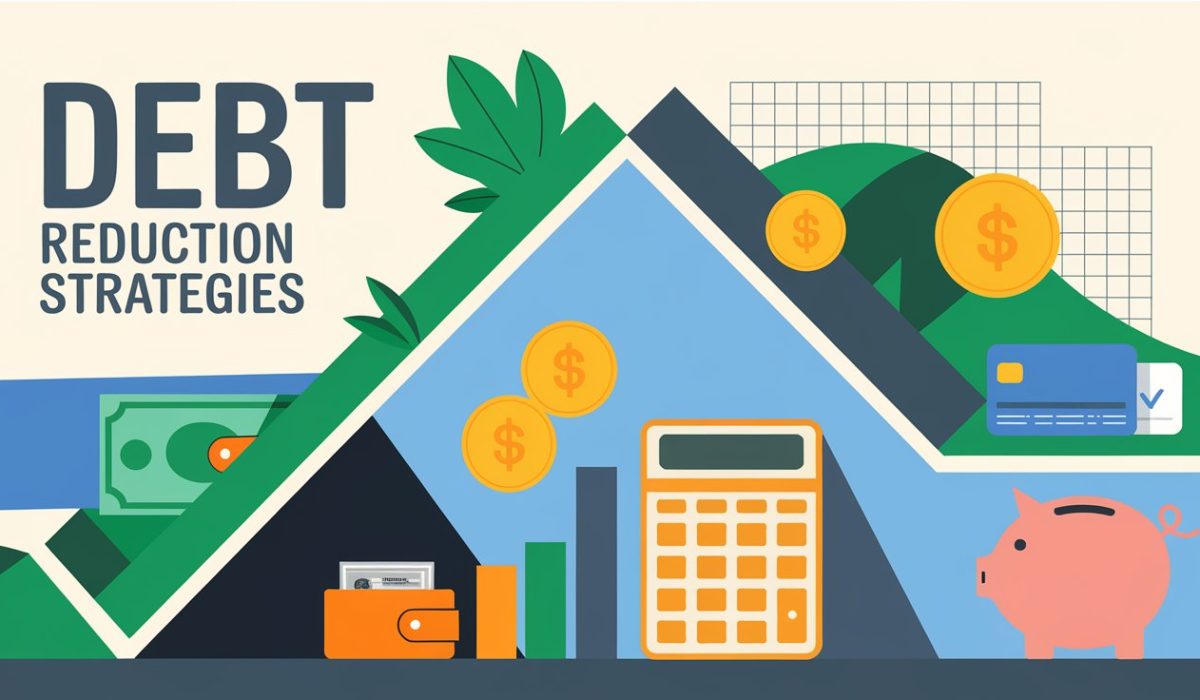Debt Reduction Strategies: Take Control of Your Finances
Dealing with debt can be overwhelming, but with the right strategies, you can take control of your financial situation. In this post, we’ll explore effective debt reduction strategies that can help you pay off your debt and regain financial freedom.
1. Understanding Your Debt
Before you can effectively reduce your debt, it’s essential to understand what you owe. Start by listing all your debts, including the total amount, interest rates, and minimum monthly payments. This clear picture will help you prioritize your payments and create a solid plan for reduction.
2. Create a Budget
Creating a budget is a fundamental step in managing your finances. By tracking your income and expenses, you can identify areas where you can cut back and allocate more money towards debt repayment. Here’s how to get started:
- Track Your Spending: Monitor your daily expenses to see where your money goes. This awareness can help you identify unnecessary expenditures.
- Set Spending Limits: Based on your income, set limits on discretionary spending categories, such as dining out or entertainment.
- Allocate Extra Funds: Direct any extra money towards debt repayment. This could include bonuses, tax refunds, or even a side hustle income.
3. Debt Reduction Methods
3.1 Snowball Method
The Snowball Method involves paying off your smallest debts first while making minimum payments on larger debts. This approach can provide quick wins, boosting your motivation as you eliminate debts one by one. As each debt is paid off, you roll that payment into the next smallest debt, creating a “snowball” effect.
3.2 Avalanche Method
Alternatively, the Avalanche Method focuses on paying off debts with the highest interest rates first. This strategy can save you money in interest payments over time. Although it may take longer to see initial progress compared to the Snowball Method, it can be more effective in reducing overall debt costs.
3.3 Balance Transfer
If you have credit card debt, consider a balance transfer to a card with a lower interest rate or a 0% introductory offer. This can help you save on interest payments and pay down the principal more quickly. However, be mindful of any transfer fees and ensure you understand the terms.
3.4 Debt Consolidation
Debt consolidation involves combining multiple debts into a single loan, often with a lower interest rate. This can simplify your payments and make it easier to manage your debt. You can explore options like personal loans, home equity loans, or a debt consolidation program through a reputable agency.
4. Seek Professional Help
If you find yourself struggling to manage your debt, don’t hesitate to seek professional help. Credit counseling services can provide guidance and develop a personalized plan to help you reduce your debt. Additionally, they can negotiate with creditors on your behalf to potentially lower interest rates or monthly payments.
5. Stay Committed and Monitor Progress
Debt reduction is a journey that requires commitment and discipline. Regularly monitor your progress to stay motivated. Celebrate small victories along the way, and adjust your strategies as needed to keep moving forward.
Conclusion
In conclusion, implementing effective debt reduction strategies can help you regain control over your finances. By understanding your debt, creating a budget, and choosing the right repayment method, you can work towards a debt-free future. Remember, the journey may be challenging, but with dedication and the right approach, you can achieve financial freedom.
